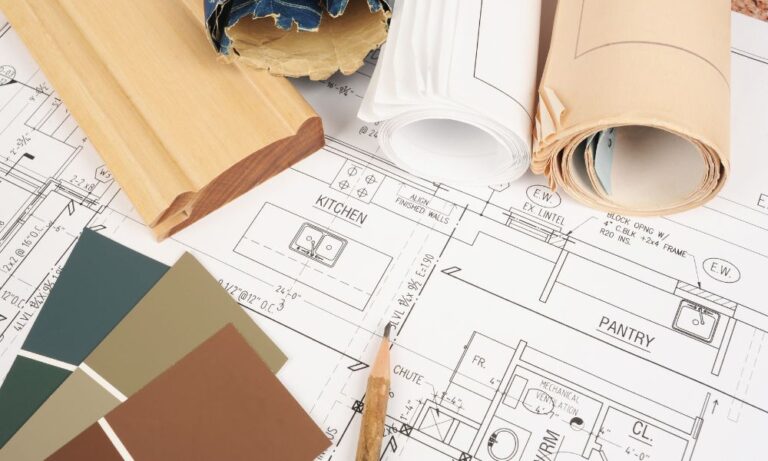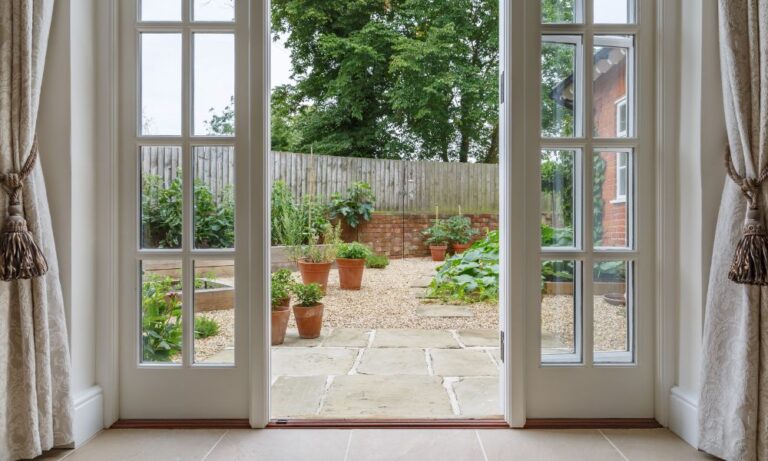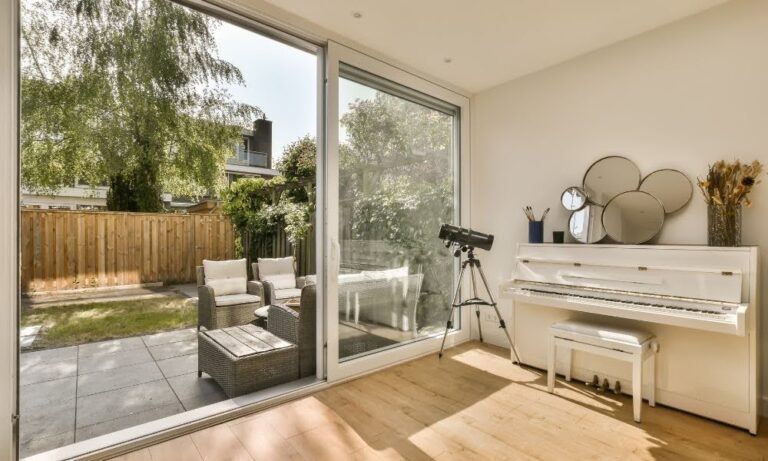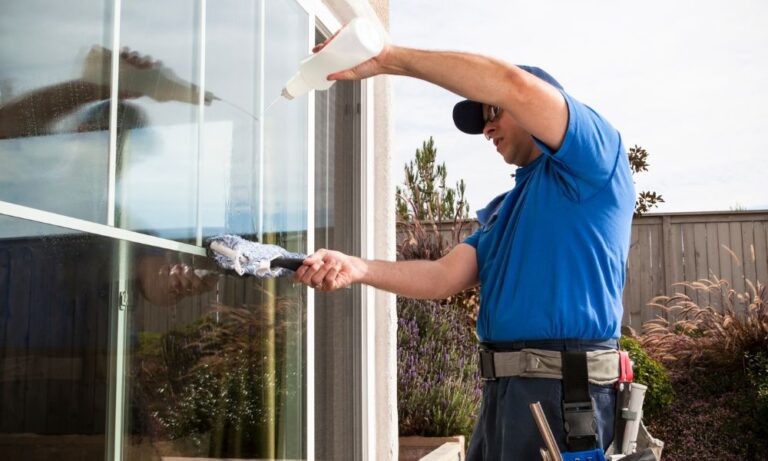Insulating Sliding Glass Doors Made Easy [Energy Saving Tips]
Insulating sliding glass doors is crucial for maintaining energy efficiency in your home. These large expanses of glass can be a significant source of heat loss during the winter and heat gain during the summer.
By properly insulating a sliding glass patio door, you can reduce your heating and cooling costs, enhance indoor comfort, and minimize drafts.
Additionally, sliding glass door insulation can help reduce noise from outside, providing a quieter and more serene living environment.
Overall, investing in insulation for your sliding patio doors is an effective way to improve your home’s energy performance and contribute to environmental sustainability by lowering your carbon footprint.
Benefits of Properly Insulated Sliding Glass Doors
Energy Efficiency
A properly insulated sliding door can significantly improve the energy efficiency of your home. Insulation helps to minimize heat transfer, keeping the cold air out during winter and the hot air out during summer.
This results in reduced reliance on heating and cooling systems, thereby lowering your energy bills and reducing your carbon footprint.
Enhanced Comfort
Insulated sliding glass doors contribute to enhanced comfort by maintaining a consistent indoor temperature. This means fewer drafts and cold spots, creating a more comfortable living environment.
Additionally, it helps in maintaining the desired humidity levels within your home, enhancing indoor air quality and overall comfort.
Noise Reduction
One of the often overlooked benefits of insulated sliding glass doors is their ability to reduce noise infiltration from outside.
The insulation acts as a sound barrier, making your home quieter and more peaceful. This is particularly beneficial if you live in a noisy neighborhood or near busy streets, allowing you to enjoy a serene indoor atmosphere.
Common Issues with Sliding Glass Doors
Air Leaks
Air leaks are a frequent issue with sliding glass doors, which can lead to drafts and a decrease in energy efficiency.
Over time, the seals around the door can wear out or become damaged, allowing outside air to enter your home. This not only makes it more challenging to maintain a comfortable indoor temperature but can also increase heating and cooling costs.
Heat Loss
Heat loss is another common problem associated with sliding glass doors. Glass is not as effective an insulator as other building materials, so heat can easily escape through the door.
This is particularly noticeable during the colder months, where the temperature difference between the inside and outside can cause significant heat loss, making your heating system work harder to compensate.
Condensation Problems
Condensation can accumulate on sliding glass doors, especially if there are issues with insulation or if the indoor humidity levels are high.
This can lead to water damage, including mold and mildew growth, which can have adverse effects on both the structure of your home and the health of its occupants. Effective insulation and proper humidity control can help mitigate these issues.
Preparation for Insulation
Before you begin insulating your sliding glass doors, it is crucial to properly prepare to ensure the best results.
Assessing the Condition of Your Sliding Glass Door
First, thoroughly inspect your sliding glass door to assess its current condition. Look for any cracks, gaps, or signs of wear in the door frame and glass.
Check the weatherstripping around the door to see if it is intact or needs replacement. Ensure that the door operates smoothly on its track and that the locking mechanism functions properly. Identifying and addressing these issues beforehand will help you achieve a more effective insulation.
Gathering Necessary Tools and Materials
Once you have assessed the condition of your door, gather all the tools and materials you will need for the insulation process. Common tools and materials include:
- Weatherstripping (foam tape, silicone beading, etc.)
- Caulk and a caulking gun
- Insulated curtains or thermal window treatments
- Window insulation film
- Measuring tape
- Utility knife or scissors
- Cleaning supplies (soap, water, cloth)
Having all these items ready before starting the insulation process will make the task more efficient and ensure that you do not need to interrupt your work to find missing materials.
Types of Insulation Methods
When it comes to insulating sliding glass doors, several methods can improve energy efficiency and comfort in your home.
These methods include weatherstripping, caulking, and using insulated drapes or curtains. Each method has its own set of benefits and considerations, so understanding these can help you choose the best option for your needs.
Weatherstripping
Weatherstripping is a popular and effective way to reduce drafts around sliding glass doors. It involves sealing the gaps between the door and its frame, thereby preventing air from escaping or entering.
Types of Weatherstrips
There are several types of weatherstripping materials to choose from:
- Felt: Inexpensive and easy to apply, but not as durable as other types.
- Foam Tape: Provides good insulation but may compress over time.
- V-Seal: Versatile and commonly used for sliding doors.
- Rubber: Durable and effective, suitable for high-traffic areas.
- Metal: Long-lasting and robust, but more difficult to install.
Installation Process
- Clean the door frame thoroughly to ensure a strong bond.
- Measure the dimensions of the door frame.
- Cut the weatherstrip to match these measurements.
- Peel off the adhesive backing and press the weatherstrip firmly into place.
- Test the door to ensure it closes properly with the new weatherstripping.
Caulking
Caulking is another key method to insulate sliding glass doors by sealing cracks and gaps around the frame.
Choosing the Right Caulk
There are different types of caulk available, including silicone, acrylic, and polyurethane. Silicone caulk is flexible and durable, making it an excellent choice for outdoor applications.
Acrylic caulk is paintable and easier to clean up, while polyurethane caulk offers strong adhesion and durability.
Steps for Caulking Your Sliding Glass Door
- Clean the area around the door frame to remove any debris or old caulk.
- Apply painter’s tape to the edges to ensure a clean line.
- Cut the tip of the caulk tube at a 45-degree angle.
- Use a caulking gun to apply a continuous bead of caulk along the seams.
- Smooth the bead with a caulk smoothing tool or your finger.
- Remove the painter’s tape before the caulk sets.
Insulated Drapes or Curtains
Using insulated drapes or curtains provides an additional layer of insulation, helping to keep your home warm in the winter and cool in the summer.
Benefits of Drapes/Curtains
- Reduce heat loss or gain through the glass.
- Improve privacy and light control.
- Add aesthetic appeal to your room.
Installation Tips
- Choose drapes or curtains with thermal lining for maximum insulation.
- Install curtain rods close to the ceiling and extend them beyond the width of the door to prevent drafts.
- Ensure the drapes or curtains are long enough to reach the floor.
- Close the drapes or curtains during extreme weather conditions to maximize their insulating effect.
By using these methods effectively, you can significantly improve the insulation of your sliding glass doors, leading to enhanced comfort and energy efficiency in your home.
Advanced Insulation Options
When it comes to insulating sliding glass doors, several advanced options can significantly enhance your home’s energy efficiency. Among these, double glazing and triple glazing are particularly effective.
Double Glazing or Triple Glazing
Double glazing involves the use of two panes of glass with a space in between, typically filled with air or an inert gas like argon. This setup reduces heat transfer, keeping your home warmer in the winter and cooler in the summer.
Triple glazing further improves upon this by adding a third pane of glass, which provides an additional layer of insulation, making it an ideal choice for extremely cold climates.
Overview of Glazing Options
Understanding the different glazing options is crucial to making an informed decision. Double glazed windows are widely popular due to their balance of performance and cost, offering substantial energy savings and noise reduction.
Triple glazed windows, while more expensive, provide superior insulation and are often chosen for their high energy efficiency, especially in regions with harsh weather conditions.
Cost and Efficiency Considerations
The initial investment in double or triple glazing can be significant, but the long-term benefits often justify the cost.
Double glazed windows are generally more affordable and offer a good return on investment through energy savings. Triple glazed windows, though pricier, can yield even greater savings on energy bills and offer enhanced comfort.
Applying Window Film
For those seeking a simpler and more cost-effective solution, applying window film to your sliding glass doors can be an excellent alternative.
Types of Window Films
There are various types of window films available, each serving different purposes. Insulating window films help to reduce heat loss through the glass, while solar control films minimize heat gain in the summer. Additionally, security films add a layer of protection against breakage.
Installation Techniques
Installing window film requires precision and patience. Start by cleaning the glass thoroughly to remove any dust or debris. Measure and cut the film to the exact dimensions of the glass.
Apply a mixture of water and soap to the glass surface to allow smooth positioning of the film. Carefully place the film on the glass, remove any air bubbles using a squeegee, and trim the edges for a perfect fit. Proper installation can greatly enhance the insulating properties of your sliding glass doors.
Professional Insulation Services
While DIY insulation projects can be handy and cost-effective, there are times when seeking professional help becomes essential. Professional insulation services ensure that your sliding glass doors are insulated with precision and efficiency.
Trained technicians possess the expertise and the right tools to address any complications, ensuring optimal energy savings and comfort.
When to Consider Professional Help
If you notice drafts, increased energy bills, or condensation around your sliding glass doors, it might be time to consider professional insulation services. Professionals can thoroughly assess your home to identify problem areas and recommend suitable insulation solutions.
Additionally, if your doors are older or have unique design features, professional intervention can be particularly beneficial.
Choosing a Reputable Insulation Contractor
Selecting the right insulation contractor involves research and due diligence. Start by seeking recommendations from friends or family and reading online reviews.
Ensure the contractor is licensed and insured, which safeguards you against any liability. It’s also crucial to request multiple quotes to compare services and prices, and don’t hesitate to ask for references to verify their previous work’s quality.
Cost Considerations
The cost of professional insulation services can vary based on several factors, including the size and type of your sliding glass doors, the insulation material used, and the complexity of the job.
While initial costs may appear high, the long-term savings on energy bills can make this investment worthwhile. Obtain detailed estimates and understand what is included before making your decision to ensure there are no hidden surprises.
Conclusion
Regular maintenance of your sliding glass doors is essential to ensure they remain insulated effectively. Over time, seals can degrade, and gaps can form, allowing drafts and temperature fluctuations that compromise your home’s comfort.
By inspecting and maintaining your door’s insulation routinely, you mitigate energy loss, improve efficiency, and prolong the lifespan of your doors.
This proactive approach not only enhances your home’s energy savings but also contributes to the overall structural integrity and appearance of your doors, making regular maintenance a smart and economical decision.


![Insulating Sliding Glass Doors Made Easy [Energy Saving Tips]](https://tagexteriors.com/wp-content/uploads/2024/08/Insulating_Sliding_Glass_Doors_Made_Easy_Energy_Saving_Tips_0001.webp)





